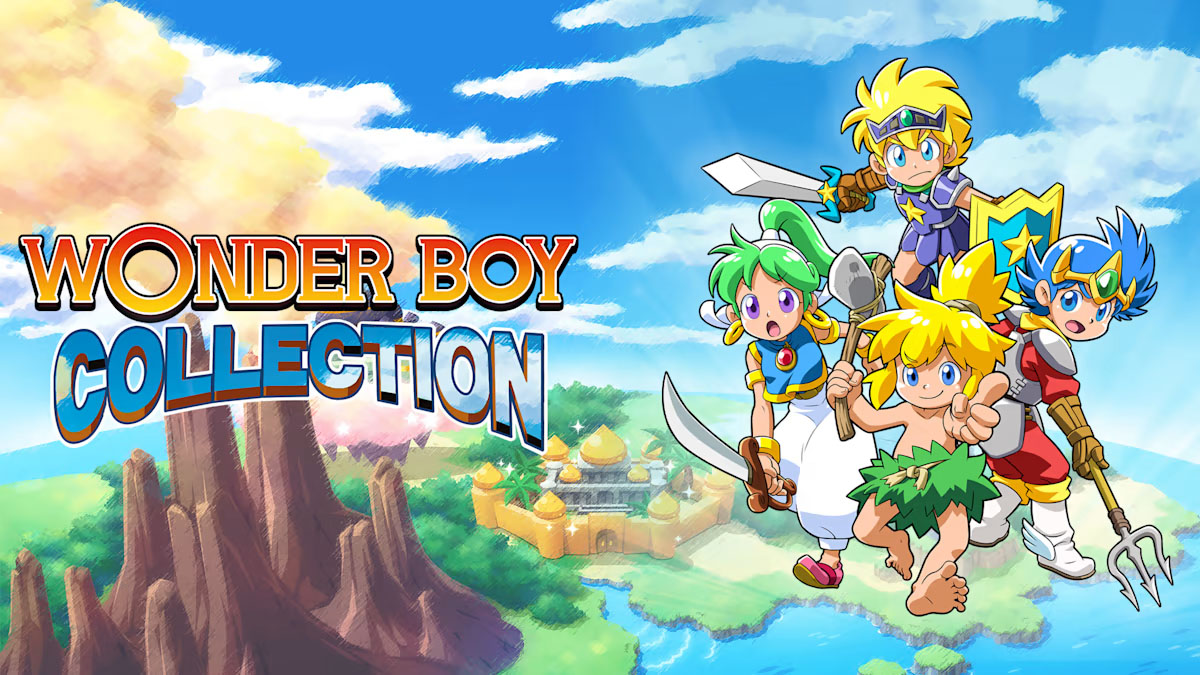
Wonder Boy Collection is a compilation of four out of the seven Wonder Boy games. Included in this collection is Wonder Boy (1986), Wonder Boy in Monster Land (1987), Wonder Boy in Monster World (1992) and Monster World IV (1994). While not all of them could make the cut, this package offers a very good cross section of what the franchise has to offer.
This franchise began in 1986, when the arcade was where gamers could get the ultimate gaming experience. The original Wonder Boy was a notable action game due to its appealing sprites and challenging linear platforming. It is also surprisingly long for an arcade game; with runs lasting about an hour.
Tom Tom is a regular everyday skateboarding caveman with a loving girlfriend, until she gets kidnapped by a monster-man with interchangeable heads. Tom Tom isn’t having any of this and he makes a mad dash towards his foe, leaping over threats and chucking hammers all the time and eating everything in his path.
Wonder Boy Collection
Developer: Bliss Brain, West One
Publisher: ININ Games
Platforms: PlayStation 4 Nintendo Switch (reviewed)
Release Date: June 3, 2022
Players: 1
Price: $29.99 USD
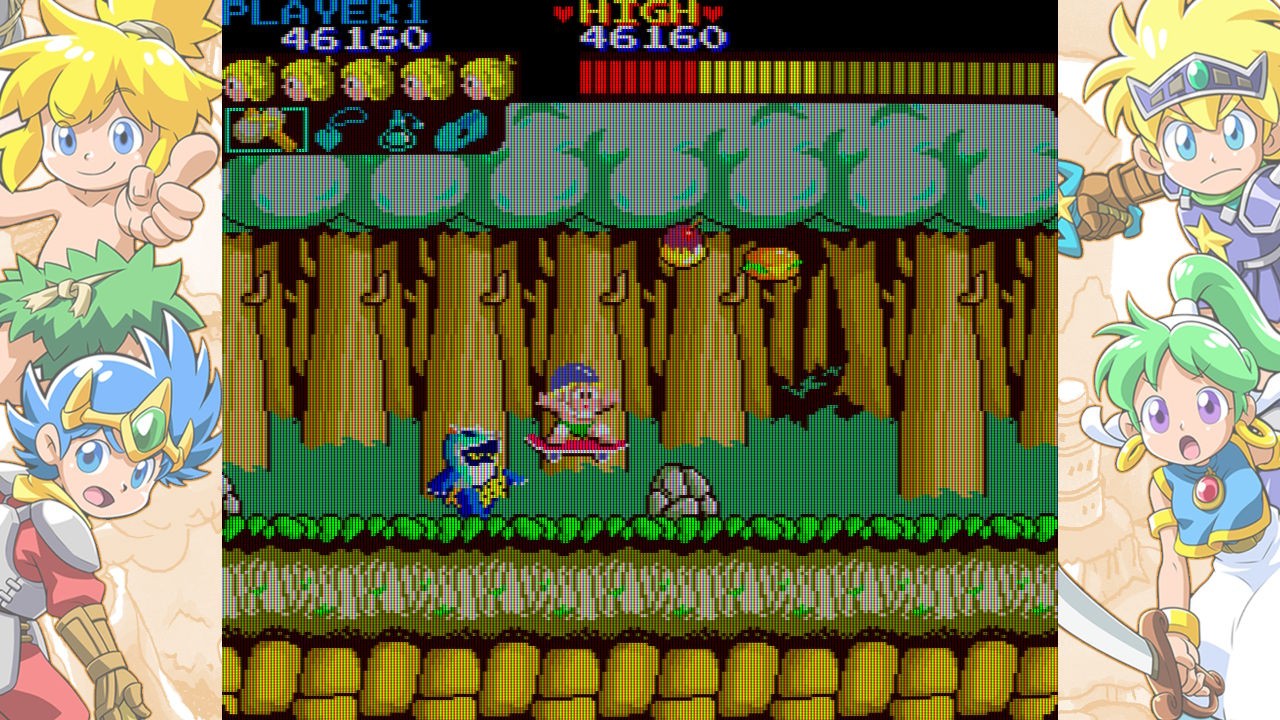
Wonder Boy is as complex as Super Mario Bros., Tom Tom can only go towards the right and can’t backtrack at all as the screen only can move in one direction. With the skateboard, gameplay becomes like an autoscrolling platformer and players have to throttle the speed while timing jumps on moving platforms.
Tom Tom has some weight to him as he moves, gaining inertia as players speed him up and have him skip across various surfaces to clear gaps. Acclimating to the rhythm gives Wonder Boy a sensational sense of flow to the action which is satisfying.
Chucking some hammers at enemies and clearing gaps is not enough to save Tina. Tom Tom will also need to constantly eat whatever he can while making his way to get to her. Stamina in Wonder Boy is functionally a timer and eating food is adding time or “stamina”. This kind of pressure dares players to risk having to get the out of the way food in order to keep the chase going.
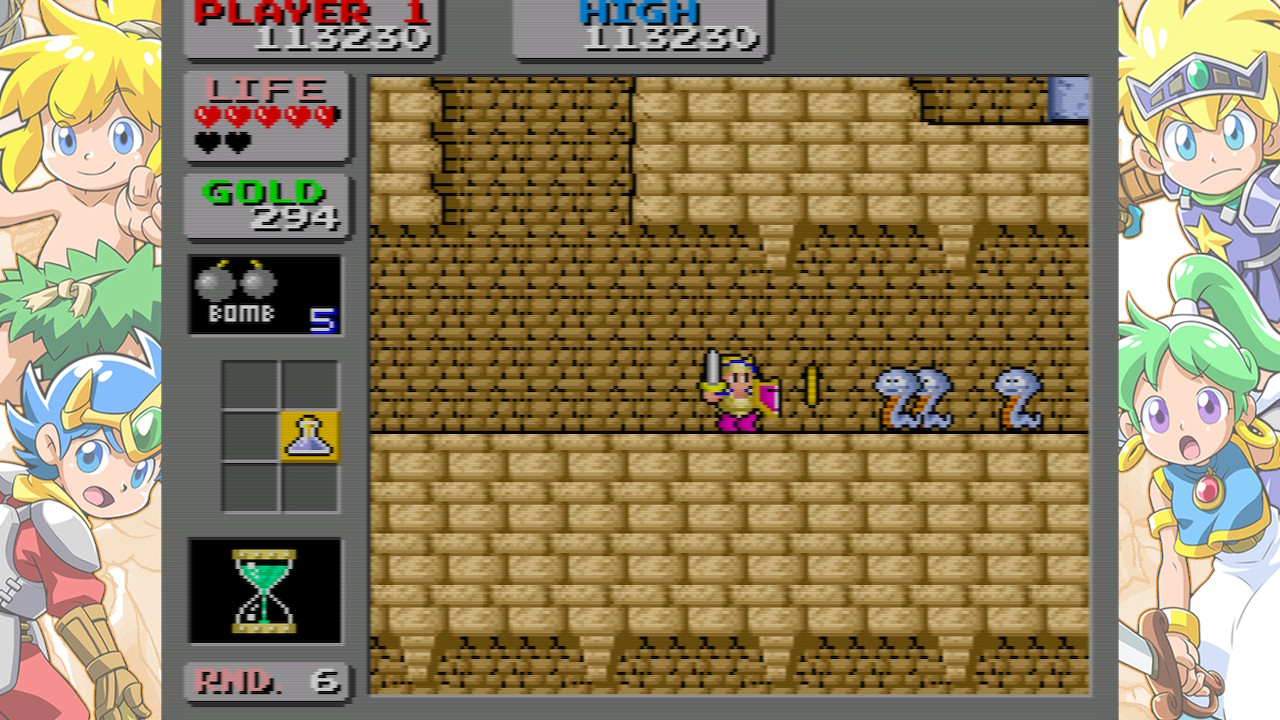
After over 35 years, Wonder Boy still holds up. Its sequel does not fare as well due to it being too ambitious for its own good. Monster Land abandons the linear platforming mad dash to the finish approach in favor for what can be best described as a kind of proto-action RPG. This kind of gameplay, expectedly didn’t translate well to arcades in 1988.
Like Tom Tom, Bock also had his girlfriend kidnapped by an evil king, but Bock decides against giving chase in his big diaper. Players will be able to collect coins to spend on power-ups and equipment to boost Bock’s strength and playability.
What makes Monster Land such a vicious kick in the groin is the arbitrary timer that ticks down and will subtract one heart from Bock’s HP pool. Despite this game offering a more open ended (but still linear) approach to level design, the constant time pressure does not permit any dawdling. Bock must press on if he hopes to survive any of the long boss fights.

This can easily lead to an efficient player dooming themselves into an unwinnable battle with a boss who moves way too fast and can spawn multiple goons to help. Often this will cause slow down and even with the rewind feature, Monster Land‘s challenge is outrageous.
Bliss Brain was gracious enough to include save states and rewinding, but what Monster Land needed was an option to disable the timer. This was originally a quarter devouring arcade machine game that was designed to separate fools from their money. The core game was already hard enough as is.
Wonder Boy and Monster Land are the only two arcade titles included in Wonder Boy Collection. Sadly, Monster Lair for arcades was not included and neither was Dragon’s Trap, which was for Master System and TurboGrafx-16.
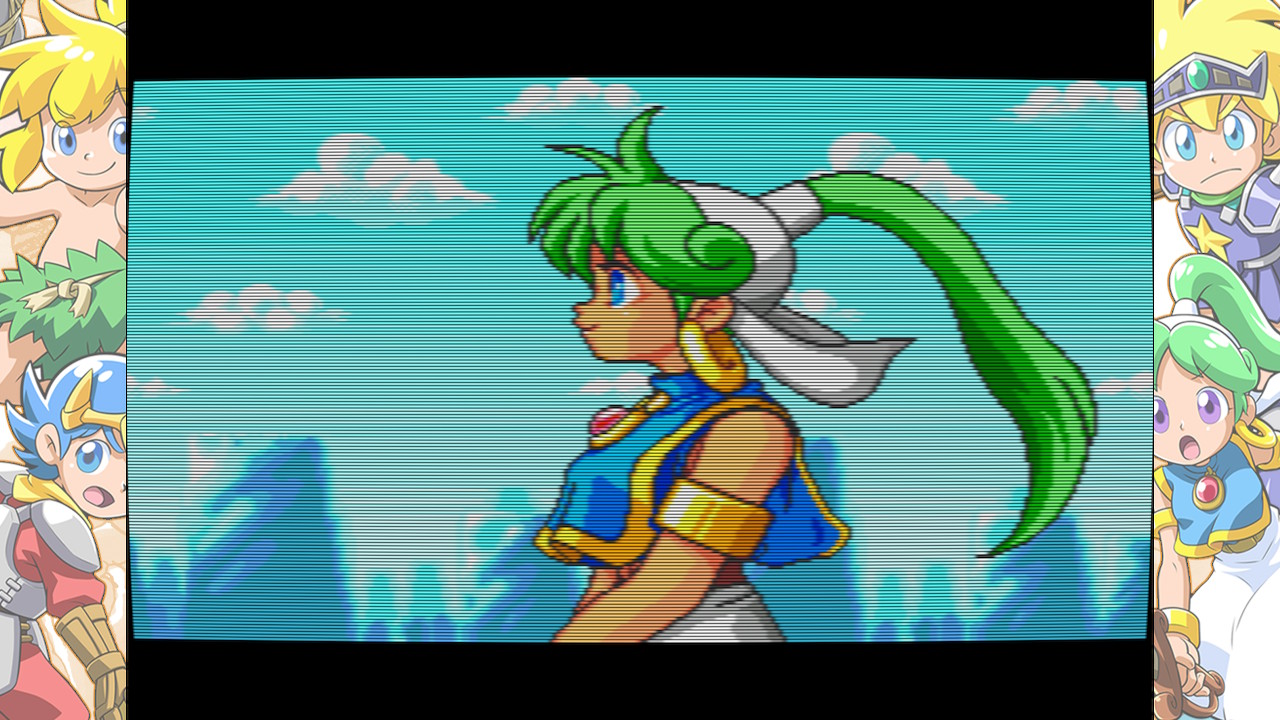
Wonder Boy and Monster Land may be a bit too “arcadey” for gamers’ tastes, but when Wonder Boy in Monster World came out in ’92 for Genesis/Mega Drive, the series really came into its own commercially and artistically.
The whole game has a clear, crisp 16-bit sound and a new sheen of consummate professionalism that really gives the processing a big blast. It’s been compared to The Adventure of Link, but I think Monster World has a far more appealing visual style and sprite art. Characters are large and expressive and even the story is more involving with fleshed out dialogue.
Shion is summoned by the prayers of a princess and while he still has to save a babe like his forefathers, he will also be recruiting the help of region specific companions. There are four total and each one expands Shion’s abilities, so long as he is in their stage.
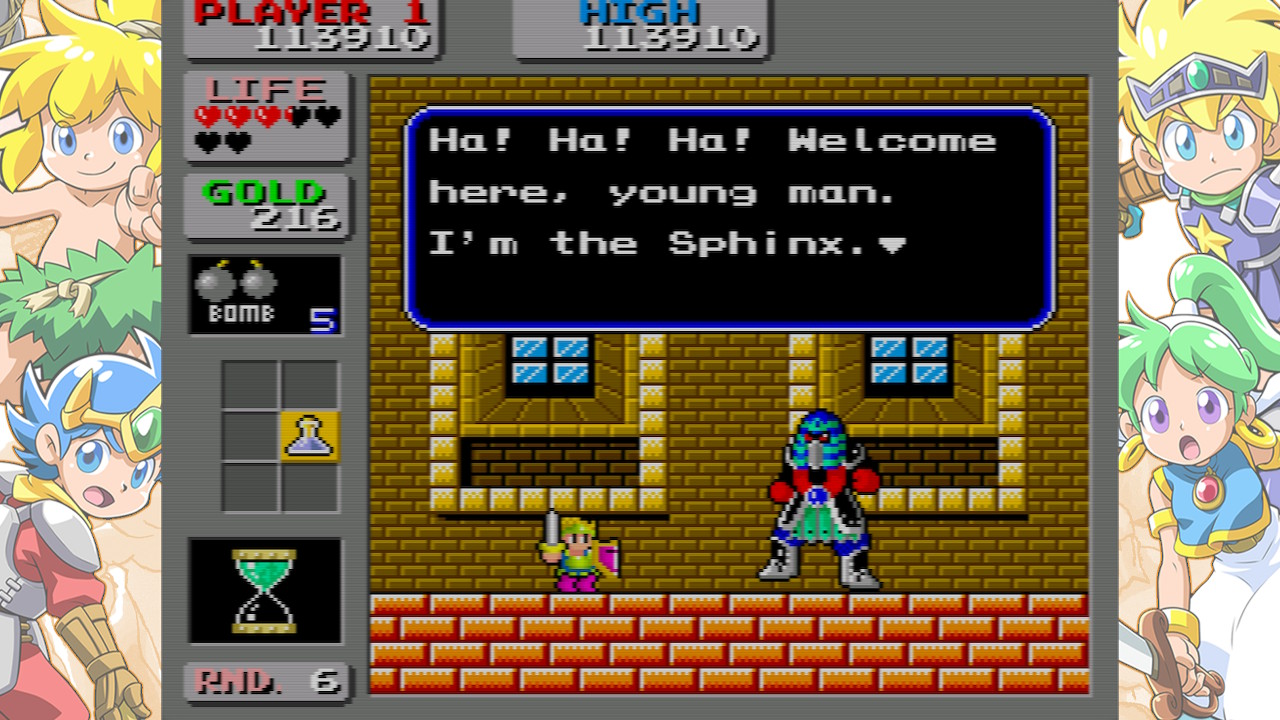
In ’94, West One released Monster World IV, their most accomplished game. It is their undisputed masterpiece; a game so influential it inspired WayForward to create Shantae. Players assumed the role of Asha, a ponytailed girl from a Arabic-inspired fantasy setting and her goal is to help the spirits that call to her.
This was a game that has a protagonist that is so cute, that they didn’t pay attention to the gameplay. But they should, its not just about Asha and a genie’s quest, but the attention to detail in the flavor text and varied platforming.
Although Monster World IV is erroneously lumped in the “metroidvania” subgenre, it really isn’t. Asha’s quest is very straightforward and the only backtracking is when she returns to the main town after boss fights.

Of all the games in this collection, Monster World IV is the most refined game in the compilation. Asha’s controls are faster than the admittedly slow Shion and the overall fantasy Arabic design of the setting has much more personality than the generic fantasy style in prior entries. Even the 2.5D remake couldn’t match charm of IV.
All four titles in this collection have their flaws in one way or another, but it is easy to cut them some slack when considering their age and limitations. IV can be suffocatingly linear and Monster World feels glacial at times. Monster Land is an action RPG made for arcades and works out as good as one would expect.
Being able to save state or rewind mistakes can make the first two arcade games more tolerable and saving anywhere is a major convenience for the two Genesis/Mega Drive titles. The emulation is also solid with no noticeable bugs and responsive controls, which is a feat for anything with blast processing.
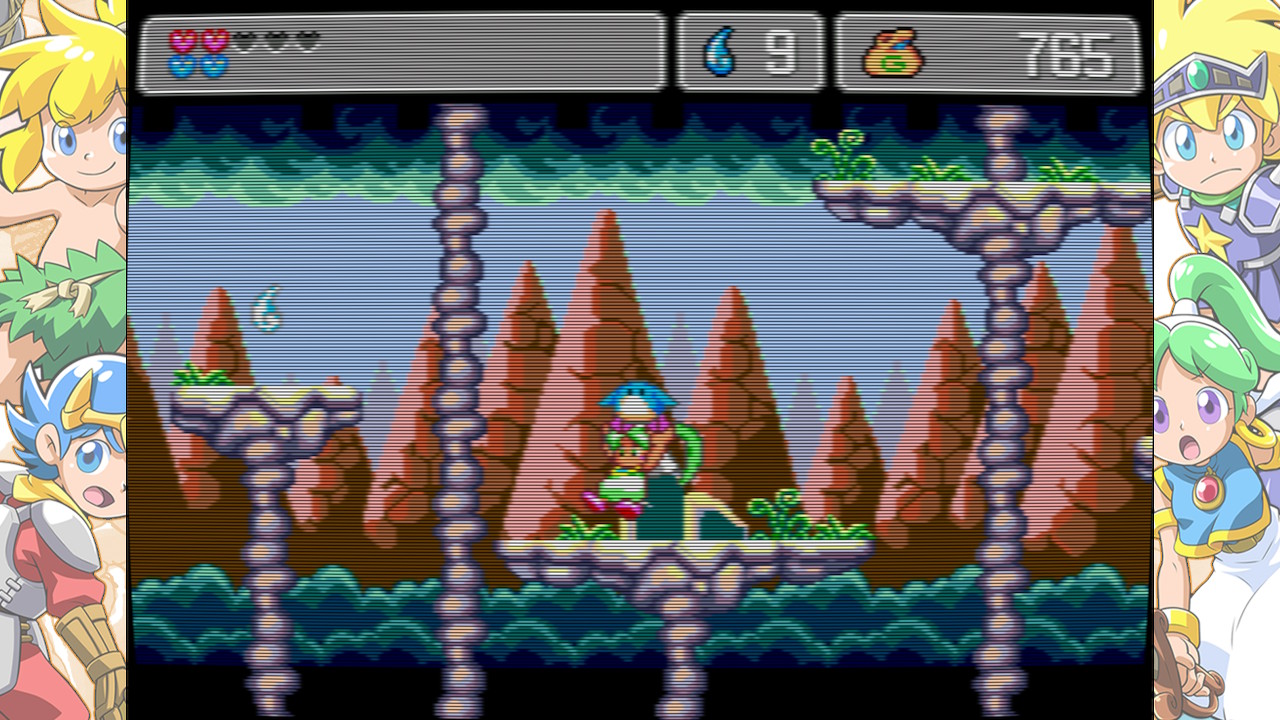
Wonder Boy Collection is a righteous compilation of a few of the Wonder Boy games. Not all of them are here and some of the best ones are omitted and most of the titles included are available in other forms on Switch or other modern platforms.
A better version of Monster Land, converted by M2, was already on the eShop with more features. Monster World IV was included in the physical version of the remake and Wonder Boy Returns was a remake of the first game, which is also on Switch. Fans who already have those versions may have little reason to get this collection.
It is convenient to have a bunch of these titles in one application and does add to the experience of having a variety of distinct platformers. Asha and Shion’s games are easily the highlight of the package, with the original arcade game being an amusing distraction with spicy challenge.
Wonder Boy Collection was reviewed on Nintendo Switch using a copy provided by ININ Games. You can find additional information about Niche Gamer’s review/ethics policy here. Wonder Boy Collection is now available for PlayStation4 and Nintendo Switch. Wonder Boy Collection has been available on Nintendo Switch and PlayStation 4.